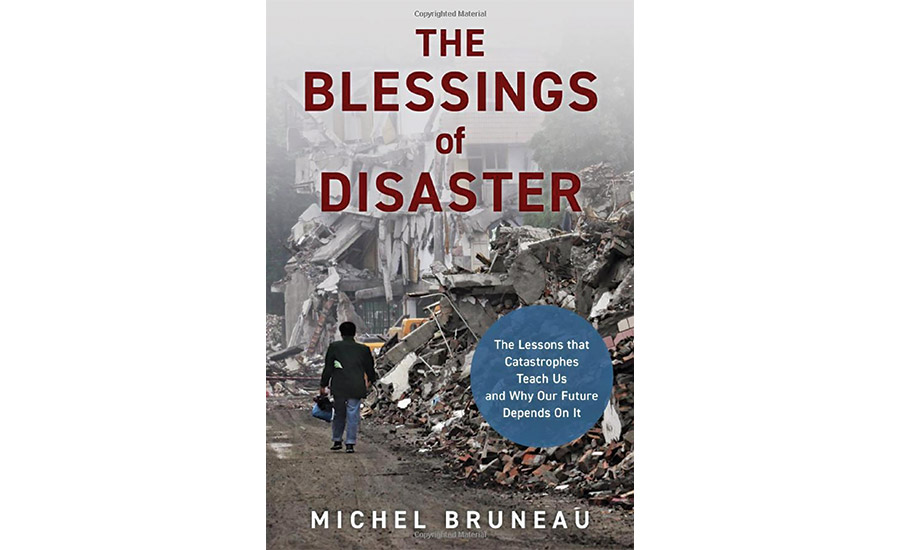In Genesis 6:11-9:19, God tips off Noah with the famous forecast of 40 days and nights of rain, but ever since then, we’ve been pretty much on our own when it comes to dealing with earthquakes, hurricanes and floods. Had we been a more prudent species, humans would have built strong structures away from faults, riverbanks and oceans, and kept schools and hospitals far from power plants. Instead, we piled onto floodplains, nestled homes practically alongside oil refineries and crowded all around the San Andreas fault.
I’ve been trying for decades to make sense of the paradox of the developed world’s economically designed but disaster-prone built environment. So I welcome Michel Bruneau’s new book, The Blessings of Disaster: The Lessons That Catastrophes Teach Us and Why Our Future Depends on It (Prometheus, 474 pages). A distinguished professor of engineering at the State University of New York at Buffalo, his academic studies and writings range widely and include three well-received novels.
Bruneau writes with a carefully calibrated sense of proportion. With each disaster, he states, comes an opportunity to learn a painful lesson. Progress is uneven. But in choosing between improved response and recovery capacity, on one hand, and mitigation on the other, it is “absolutely better to mitigate the vulnerability of the infrastructure in the first place, to reduce possible loss of functionality right at the outset.” Fast recovery adds to resilience, he states, but “only mitigation can eliminate the massive initial losses that make it a disaster in the first place” and avoid getting stuck in a cycle of destruction and reconstruction.
Bruneau reviews some history-making catastrophes—among them California’s Loma Prieta earthquake in 1989, the 2011 quake in Christchurch, New Zealand and Hurricane Katrina’s flooding of New Orleans in 2005.
At first I thought Bruneau used a bit too much wit and irony, but his talent is clear, as in one section on earth science and continental drift. “Once upon a time, all of the earth’s continents slept together, as in a hippie commune,” he writes. Africa embraced South America, and North America hugged both at the same time, but the relationships didn’t last.
What I also admire, and believe that engineers will appreciate, is that Bruneau has tucked serious and rather involved ideas about risk, engineering, safety and society, as well as life in general, into a book that is also entertaining. He writes poignantly of the contradictions of a technologically advanced civilization with building codes that aim for life preservation but not the property resilience needed to prosper after a catastrophe. He asks, for example, whether all the effort at creating quake warning systems will really lead to much gain.
In considering the 2011 Fukishima quake-tsunami-nuclear disaster, he leaps back to an 1854 demonstration of the safety of the elevator in taller buildings, and its brake mechanism to prevent the car from falling. Eventually all technologies fail, he writes, so “instead of relying on probabilistic calculations to bury a risk in mathematics, a better solution is to plan fail-safe approaches—that is, defense mechanisms, embedded in infrastructure itself, that assume things will fail but that will” control and minimize consequences.
Among the other subjects Bruneau tackles are religious belief, fatalism, Black Swan events and the logic underlying Sim City. His thoughts are shared in such a light and charming way that I, for one, don’t mind.
I’m grateful to Bruneau for confronting the cultural and spiritual complications of catastrophe without tedious proselytizing. Although it can be undermined by human error, engineering is a rational discipline, as I see it, but it is a small planet that lives in a galaxy of human irrationality. The blessings of disasters are harsh lessons that show much, I’m afraid, about our own capacity for folly.





Post a comment to this article
Report Abusive Comment